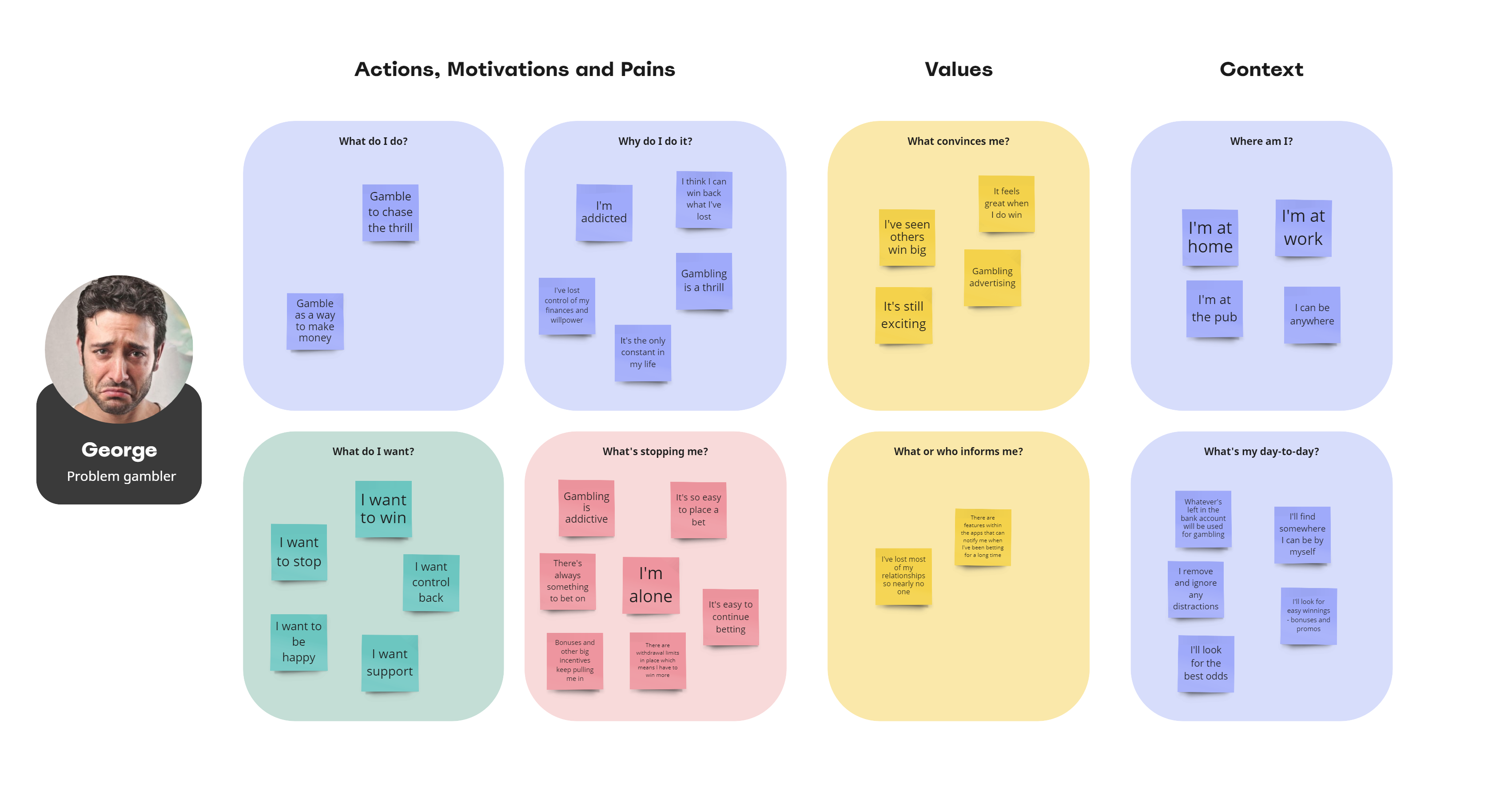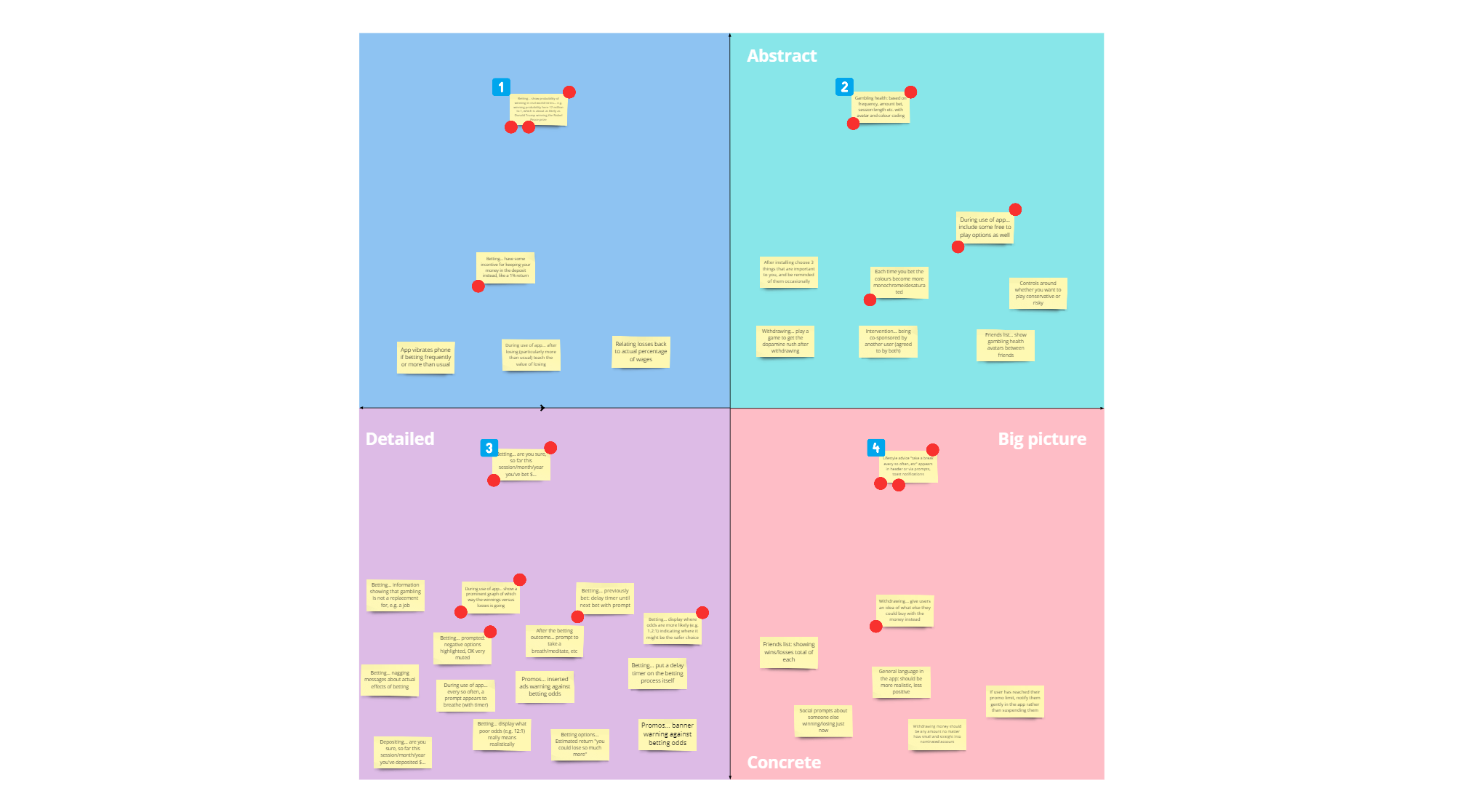Firstly, I looked at a range of betting apps on the Australian market. The primary purpose was to understand how these apps persuade their users to take certain actions.
On the other side of this, was to contrast the user experience of these actions with the user experience of actions that could be considered less desirable from a gambling providers perspective.
I then looked at the users of these apps, trying to ascertain their experience of using these apps. I looked at comments against app reviews, and at videos on YouTube relating to the user experience of these apps.

I also wrote and distributed an online, anonymous survey; however, I couldn’t gain traction with this most likely to the sensitive nature of the information shared (https://bit.ly/3NWA7jN).
I looked at the data coming out of the research. Some of the findings were:
As a result, I identified three main themes while using and researching the apps:
So, what is the potential harm, particularly for people with gambling addiction? Mapping this back to the themes identified:

Now let’s relate this back to actual users. What are the Jobs to be Done, and what is the profile of a user affected by gambling addiction?
The most straight-forward Jobs to be Done for any user of any gambling app would be as follows:
I want to place a bet so that I can win some money.
For a problem gambler, this might even be reframed as:
I want to recapture the magic of when I first gambled, or
I want to win back all the money that I’ve lost.
These are actionable insights.
I looked at what the research was telling me and what I understood of problem gambling and developed the following persona. This gave me a frame of reference so that while coming up with approaches I would better understand their viability. It also allowed me to more concretely empathise with the user.

So, what might the journey of this user look like? What are the pain points and the delights of these users?
Making an evaluation of the user journey allows us to consider where interventions may help.
Now, what have we determined?
Relating back to the themes:

We have considered the user and the journey they take through the app. We’ve identified some key findings out of this and performing research on the app and its users.
At this stage, we can start to perform some idea generation that might help to reduce the more problematic elements of the user experience.
When I performed the ideation, I set my timer for 8 minutes and came up with 8 ideas (Crazy 8’s). Doing this 3 times meant I had 24 different ideas of varying quality. These ideas were then mapped to 4 different quadrants depending on whether they were Abstract/Concrete concepts or Detailed/Big picture concepts (or somewhere in between).
I then ran another round of ideation to see if I could generate more ideas for those quadrants that didn’t have many ideas represented.
The idea behind this approach was to firstly, come up with lots of ideas in a short amount of time, and secondly, generate ideas that varied in terms of their scope and their viability.
These ideas were then prioritised based on basically how ‘good’ they felt. Would they solve a genuine user problem? Could I say with confidence that these ideas could be implemented by engineering/design? Would the implementation of these ideas lead to business growth?

Armed with these findings and these concepts, I presented these ideas back to the Ballsbet founders and design team. The following concept mock ups were created to clearly communicate the ideas I had.

I presented these ideas as though they were being presented by Ballsbet themselves, and a persona, identified as ‘George’, was brought in throughout the narrative. This was done to make the entire presentation seem aspirational, and to demonstrate that I had a solid grasp of the types of users best served by the concepts identified.
The tangible outcome for the client, Ballsbet, was a set of concepts that they would discuss internally and potentially test against their users. The greater outcome perhaps, was a better understanding of the current state of UX within the gambling industry and how this harms a vulnerable demographic. By performing this analysis, we have taken steps to empathise with these users and ideate interventions that have the power to transform Ballsbet into a sustainable long-term business that differentiates itself from its peers.
What would I do differently next time? I would try harder to get the survey in the hands of actual users. I truly believe this would have greatly supported the narrative, by providing further qualitative data about users.